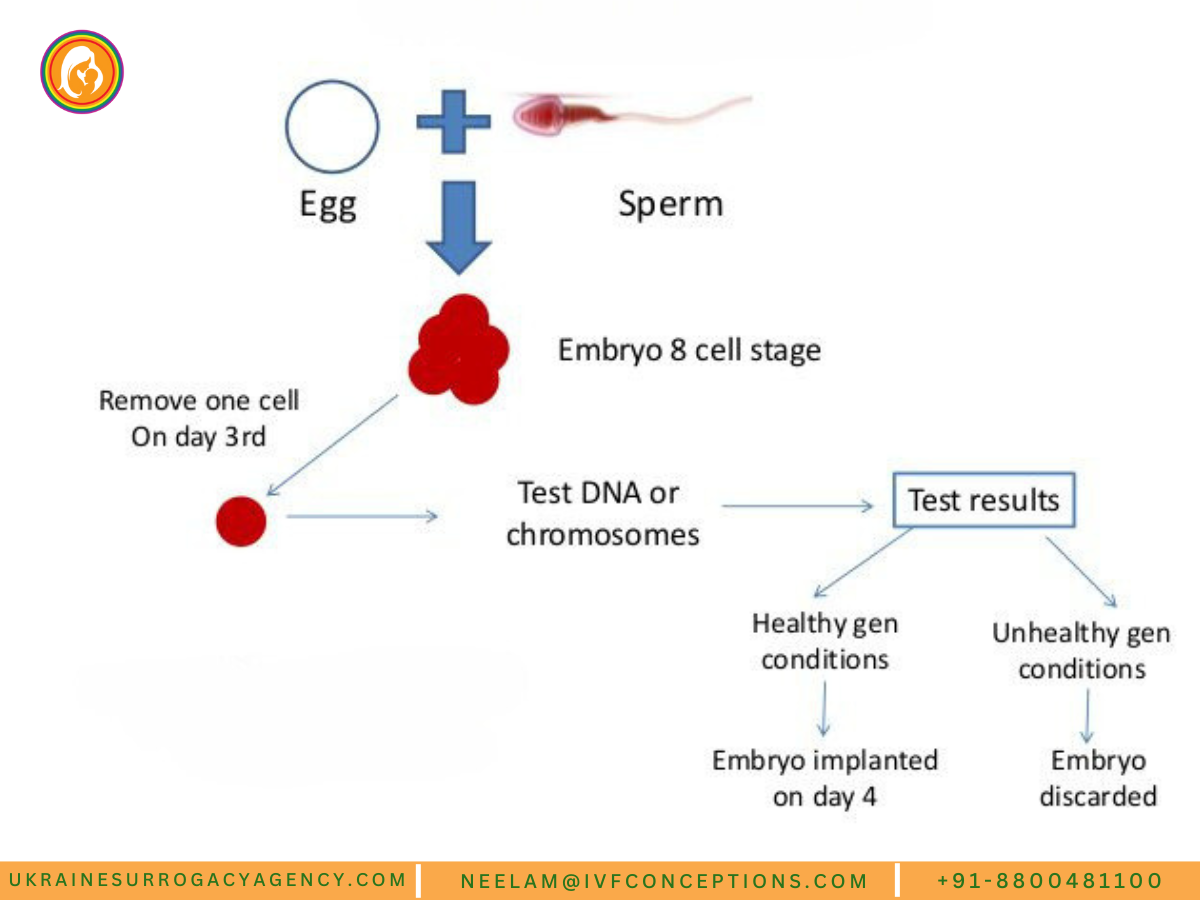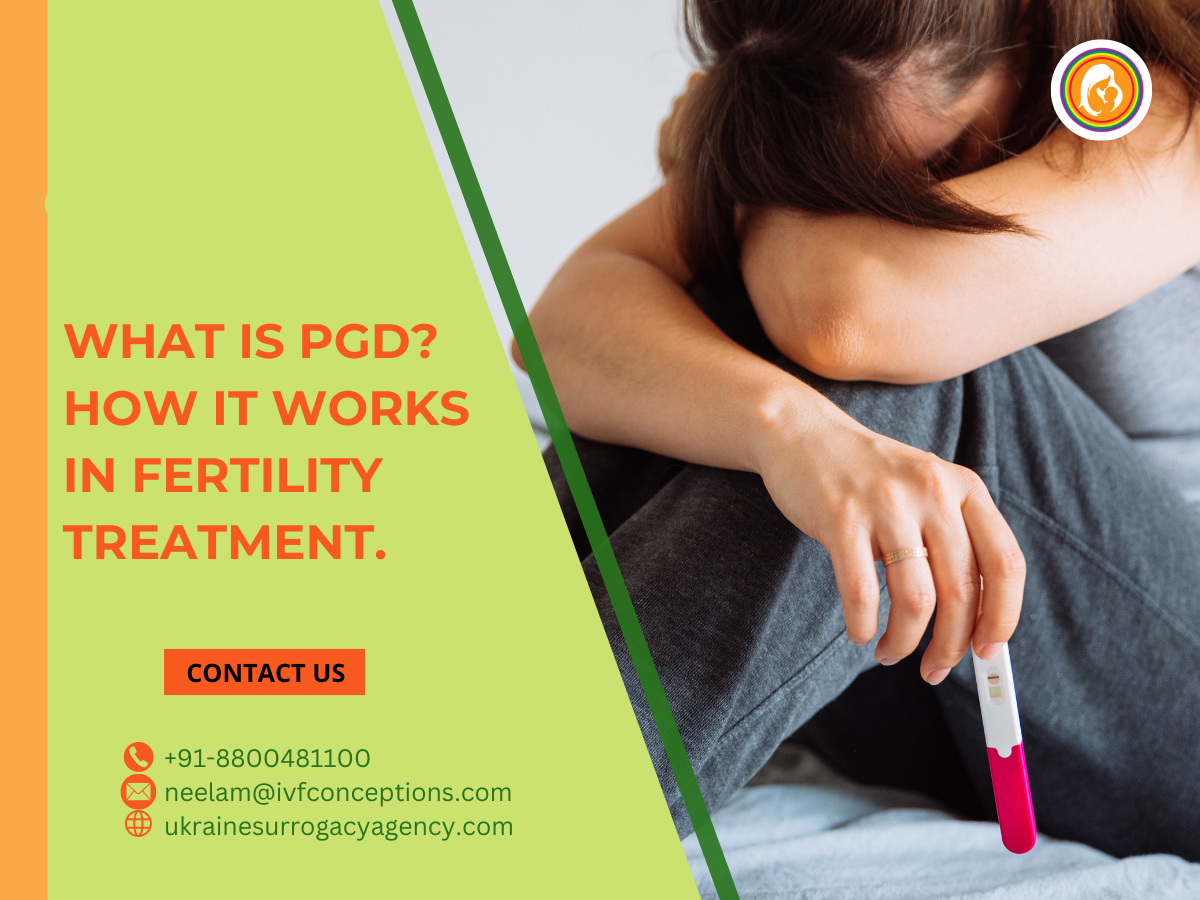What Is PGD? How It Works in Fertility Treatment
Have you ever thought about how couples can make sure their future kids are healthy? The answer is in a new method called Preimplantation Genetic Diagnosis (PGD). But what exactly is PGD, and how does it fit into fertility treatments like In Vitro Fertilization (IVF)? This article will give you a full look at PGD. We’ll cover its benefits, how it works, and who can use this advanced technology.
Key Takeaways
- PGD is a genetic screening technique used with IVF to identify genetic abnormalities in embryos before implantation.
- PGD can increase the chances of a successful pregnancy and a healthy baby, especially for those at risk of passing on serious genetic conditions.
- The PGD process involves testing embryos created during IVF to select only those that are genetically healthy for transfer to the uterus.
- PGD is often used in conjunction with IVF to ensure the implantation of only healthy, unaffected embryos.
- PGD can also be used for gender selection and family balancing purposes.
Get in touch for FREE SURROGACY CONSULTING:
Mobile: +91-8800481100 ( WhatsApp, Line, Viber)
Email: neelam@ivfconceptions.com
Understanding Preimplantation Genetic Diagnosis (PGD)
What is PGD? PGD is a high-tech way to check embryos from IVF for certain genetic issues or inherited diseases before they go into the uterus. This method makes sure only healthy embryos are chosen for implantation. It boosts the chances of a healthy pregnancy and baby.
PGD vs PGS: PGD looks for specific genetic problems. PGS checks an embryo’s overall chromosome health. PGS, or Preimplantation Genetic Testing for Aneuploidy (PGT-A), finds embryos with the right number of chromosomes to transfer.
PGD is great for couples carrying a genetic disorder. It lets them pick embryos without the condition. PGS is often used for older women or those with past miscarriages or failed implantations. It helps find healthy embryos, raising the pregnancy success rate.
Both PGD and PGS take a few cells from the embryo at the blastocyst stage for genetic testing. The choice between them depends on the patient’s unique situation.
More Resources to Read:
Gestational Surrogacy in Ukraine
IVF with Egg Donation in Ukraine
Surrogacy for HIV+ Intended Parents in Ukraine
How PGD Works in IVF Treatment
The PGD process is a key part of in-vitro fertilization (IVF). First, patients take fertility drugs to make many eggs. Then, these eggs are taken out and mixed with sperm in the lab.
This mix creates embryos. They are checked for genetic issues or specific diseases through the PGD procedure.
The PGD Procedure

A small sample, or biopsy, is taken from the embryos. This biopsy checks for genetic problems or certain diseases. The aim is to pick healthy embryos for implanting in the uterus.
This biopsy happens in a controlled lab setting. Studies show it doesn’t harm the embryo or lower the chance of a successful pregnancy.
PGD and IVF
Combining PGD and IVF helps find genetic disorders before transferring embryos. It’s great for couples with genetic diseases or repeated pregnancy loss.
By picking healthy embryos, how PGD works boosts the chance of a successful pregnancy and a healthy baby.
Safety and Success Rates of PGD
Is PGD Safe?
PGD is seen as a safe method when done by skilled doctors and scientists. Taking one or two cells from the embryo doesn’t hurt the rest of the embryo or its growth. Many healthy babies have been born after PGD was part of their IVF treatment.
Research shows that PGD doesn’t affect the health or growth of children. The process takes a few cells from the embryo, which doesn’t stop it from growing or implanting well. Lots of studies have proven PGD is safe and works well, with most PGD kids growing up healthy.
Like any medical procedure, PGD has some risks. However the benefits of lowering genetic disorder risks and boosting IVF success are often bigger. Good fertility clinics follow strict rules to make sure PGD is as safe as possible.
“PGD is a safe and effective tool that has helped countless couples have healthy children. The biopsy process is minimally invasive and the outcomes have been overwhelmingly positive.”
In summary, PGD is a safe and dependable choice for couples wanting to avoid genetic disorders or increase their pregnancy success. It’s key to work with a skilled fertility expert for the best results.
Advantages and Disadvantages of Embryo Screening
Embryo screening techniques like preimplantation genetic diagnosis (PGD) have many benefits and some drawbacks. Let’s look at both sides.
Sure! Here’s the content formatted in a table for easy reading:
| Aspect | Advantages | Disadvantages |
|---|---|---|
| Embryo Screening | Embryo screening techniques like preimplantation genetic diagnosis (PGD) have many benefits and some drawbacks. Let’s look at both sides. | |
| Advantages of Embryo Screening | – Picking healthier embryos boosts the chance of a successful pregnancy. – PGD can spot and stop genetic defects, giving parents peace of mind that their child won’t have certain inherited conditions. – PGD allows parents to choose the embryo’s sex for certain genetic diseases. – It helps parents make informed choices. – It can make getting pregnant faster by focusing on the healthiest embryos. – Reduces worry and uncertainty about the baby’s health. |
|
| Disadvantages of Embryo Screening | – Cost: PGD can be expensive, costing between $3,000 to $5,000 per cycle, which can prevent some couples from using this technology. – Ethical concerns: There are worries about choosing embryos, with fears that PGD could lead to designer babies by selecting traits beyond just avoiding genetic issues. This raises questions about the limits of genetic engineering and its effects on future generations. – Safety concerns: Although PGD is generally safe, there is a small chance of embryo damage or chromosomal issues during the biopsy process. |
Advantages of Embryo Screening
One big plus of embryo screening is picking healthier embryos. This boosts the chance of a successful pregnancy. PGD can spot and stop genetic defects, giving parents peace of mind their child won’t have certain inherited conditions.
PGD also lets parents choose the embryo’s sex for certain genetic diseases. This helps parents make informed choices. Plus, it can make getting pregnant faster by focusing on the healthiest embryos. This reduces the worry and uncertainty about the baby’s health.
Disadvantages of Embryo Screening
A big drawback is the cost. PGD can be expensive, costing between $3,000 to $5,000 per cycle. This price can stop some couples from using this technology.
There are also ethical concerns about choosing embryos. Some worry that PGD could lead to designer babies, picking traits beyond just avoiding genetic issues. This brings up questions about genetic engineering limits and its effects on future generations.
There are also safety worries with the PGD biopsy. Though safe, there’s a small chance of embryo damage or chromosomal issues.
In summary, PGD has its ups and downs. It can help ensure a healthy pregnancy and prevent genetic disorders. Yet, it also has financial and ethical sides that parents must think about carefully.
Who Should Consider PGD?

Preimplantation Genetic Diagnosis (PGD) is a key fertility treatment for many people and couples. It’s for those who need it for different reasons. Here are some examples:
- Individuals or couples are known to be carriers of a serious autosomal genetic condition
- Those with a family history of inherited genetic or chromosomal disorders
- Couples who have previously had a child with a genetic disorder or have terminated a pregnancy due to a genetic condition
- Women over the age of 35, as there is a higher risk of genetic abnormalities in their eggs
- Couples who have experienced recurrent, unexplained pregnancy loss or multiple failed fertility treatments
PGD can spot chromosomal issues like aneuploidy, which often leads to early embryo loss and miscarriage. It can also help screen for inherited sex-linked disorders like hemophilia. Women over 35 might find PGD especially helpful due to concerns over their eggs’ genetic quality.
Couples with a family history of inherited diseases or who carry single-gene disorders might want to consider PGD. This can lower the chance of passing on these conditions to their kids. The success of PGD depends on the skill of the PGD clinics and their staff’s experience.
Deciding if PGD is right for you should involve talking to a fertility expert. They can help figure out if PGD eligibility and PGD requirements apply to you.
More Resources to Read:
Guaranteed Surrogacy Baby in Ukraine
Gestational Surrogacy in Ukraine
Guaranteed Surrogacy Baby in Ukraine
Conclusion
Preimplantation Genetic Diagnosis (PGD) has changed the game in fertility treatments. It lets couples at risk of passing on genetic diseases have a healthy child. The PGD process uses in vitro fertilization (IVF) and checks embryos for genetic issues before transfer. This way, only healthy embryos are chosen.
The cost of PGD can be high, starting at $11,000 per IVF cycle. But the benefits are huge. Couples might try up to 8 times to test for multiple conditions. Sometimes, they even try 14 times over 2.5 years for matching siblings. As PGD technology gets better, success rates go up. But, we must think about the risks and ethics, like treating children as commodities or limiting genetic diversity.
PGD is a complex and fast-changing area. It needs careful thought and talks with fertility experts. Deciding on PGD should be based on your own health, family history, and goals. Knowing about PGD definition, procedure, and eligibility helps you make a smart choice for your family.
If you’d like to learn more about IVF, Egg Donation, or surrogacy Consulting services globally, check out the rest of our website at IVF Conceptions. We offer legally secure and affordable surrogacy cons Neelam Chhagani is inviting you to a scheduled Zoom meeting.
Our team has over 14 years of experience facilitating surrogacy arrangements, egg donation, and serving as an advocacy resource for infertile couples and LGBTQ individuals seeking to build families. Till now we have helped and supported thousands of the intended parents with their family-building journey, and we can help you as well. Happy to share the references from the past IPs if needed.
If you’d like to learn more about IVF, Egg Donation, or surrogacy services globally, check out the rest of our website at Complete Surrogacy. We offer legally secure and affordable surrogacy consulting services for FREE.
Get in touch for FREE SURROGACY CONSULTING:
Mobile: +91-8800481100 ( WhatsApp, Line, Viber)
Email: neelam@ivfconceptions.com
Web: www.completesurrogacy.com
Web: https://georgiasurrogacyagency.com/

FAQ- about PGD
What is Preimplantation Genetic Diagnosis (PGD)?
PGD is a way to check a pre-embryo’s genes before putting it in the uterus during IVF. It helps find genetic problems, chromosomal issues, and inherited disorders. This way, only healthy embryos are transferred.
How does PGD work in IVF treatment?
PGD is part of the IVF process. First, the patient gets fertility treatments to make many eggs. Then, these eggs are taken out and mixed with sperm in the lab to create embryos.
Next, a small sample from the embryo is taken for genetic testing. After that, the healthiest embryos are chosen for transfer.
Is PGD safe?
PGD is usually safe when done by skilled doctors and scientists. Taking a few cells from the embryo doesn’t hurt the rest of it or its growth. Many healthy babies have been born after PGD in IVF.
What are the advantages of embryo screening with PGD?
PGD helps pick the best embryos for a successful pregnancy. It stops genetic defects and disorders from passing on. It can also help choose the baby’s gender in some cases.
It makes getting pregnant faster by using only the healthiest embryos. This lowers the worry and stress for parents about their baby’s health.
Who should consider PGD?
PGD might be right for many people and couples. This includes those carrying a serious genetic condition, those with a family history of genetic disorders, or those who’ve had a child with a genetic issue.
It’s also for those who’ve had repeated pregnancy loss or failed fertility treatments. Women over 35 and those with multiple failed IVF attempts might also consider it.
Source Links
- What is PGD And How Does It Work
- Preimplantation Genetic Testing (PGD & PGS)
- Overview, Indications and Conditions, Process
- Preimplantation genetic diagnosis: Needs to be tightly regulated

Highly esteemed, authoritative, and trusted professional with a 14-year of experience in international surrogacy. Advocate for Secure, Legal, and Affordable International Surrogacy.
Neelam Chhagani, MA (Counselling Psychology) and Holistic Infertility and Third-Party Reproduction Consultant.
Member of European Fertility Society, Best Surrogacy Blogger of 2020, with 300 dedicated blogs, and top contributor on Quora for Surrogacy.











Add Your Comment